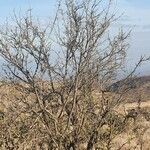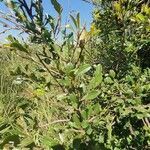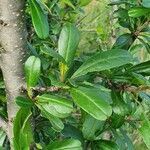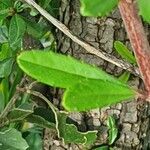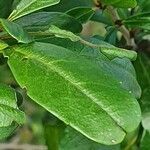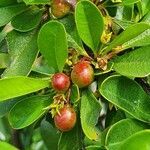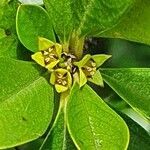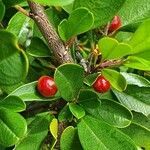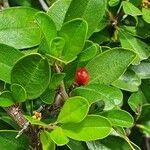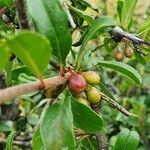Leaves crowded at the end of short shoots; lamina 1·2–2·5 (3·5) × 0·7–1·5 cm., narrowly elliptic, elliptic, narrowly obovate or obovate, rounded and often emarginate at the apex, margin entire or obscurely denticulate, cuneate at the base, shining above, dull beneath, secondary nerves in 4–5 pairs, sparingly puberulous above; petiole 1–3 mm. long; stipules minute, ciliate.
A shrub or small tree. It grows 7 m tall. It loses its leaves during the year. Young branches have grey hairs. The leaf blades are narrowly oval and 2-3 cm long by 6-15 mm wide. The flowers occur singly at the nodes. They are usually green but can be orange. The fruit are round and 5 mm across.
Shrub or tree to 7 m. tall; branches puberulous or glabrous, frequently spine-tipped; bark black.
Flowers 4-merous, with pedicels 1–3 mm. long lengthening to 8–10 mm. long in fruit.
Ovary 3-locular; 1 ovule per loculus; style short, 3-fid.
Petals 1 mm. long, shorter than the stamens, hyaline.
Inflorescences of few-flowered axillary fascicles.
Fruit 5 mm. in diam., somewhat fleshy.
Stamens with filaments 1 mm. long.
Sepals 1·5 mm. long, deltate.
Receptacle 4-angled.
Seeds 3.
